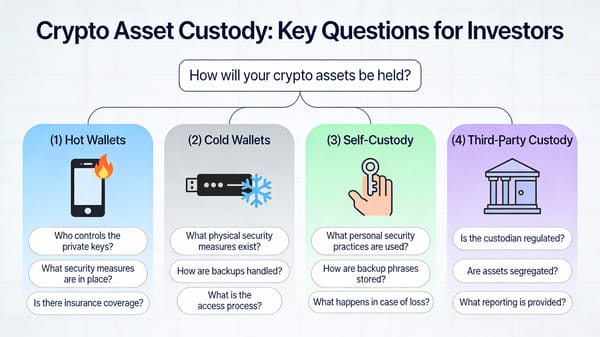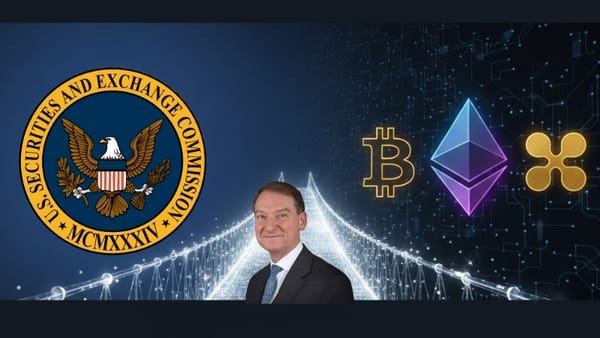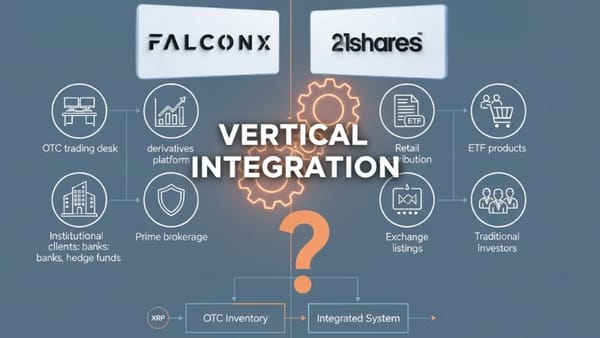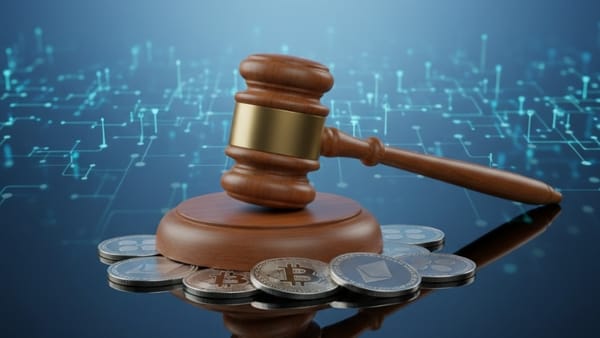Ripple Plans $1B Raise to Purchase XRP: A Strategic Power Move
Ripple Labs is raising $1 billion through a SPAC to purchase XRP tokens and establish a new digital asset treasury. This bold move demonstrates strong institutional confidence in XRP's future despite market volatility—here's what it means for holders.
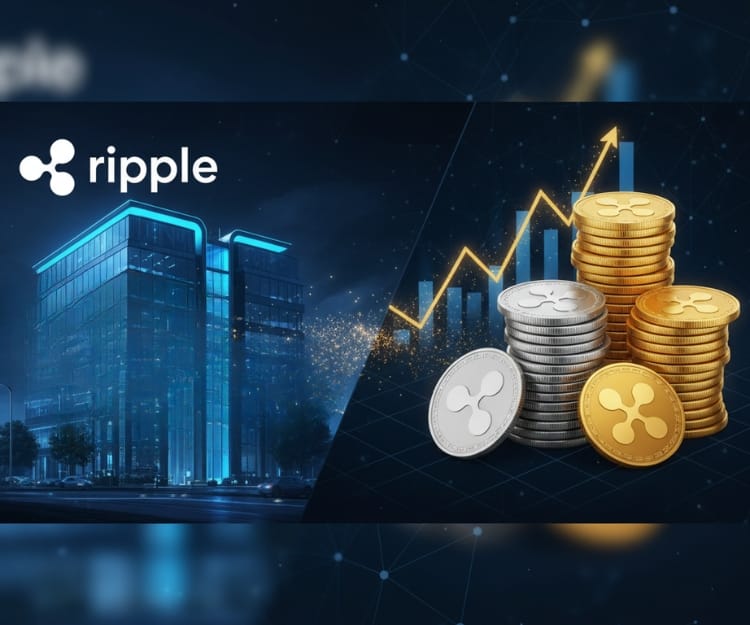
Ripple Labs is raising at least $1 billion through a special-purpose vehicle to accumulate XRP tokens from the open market, marking one of the most ambitious corporate treasury strategies in cryptocurrency history. This bold financial maneuver—announced alongside Ripple's $1 billion acquisition of treasury management firm GTreasury—signals a comprehensive plan to position XRP at the center of institutional finance.
The fundraising will be conducted via a special purpose acquisition company (SPAC), with funds held inside a new digital-asset treasury (DAT) structure, and Ripple plans to contribute a portion of its own XRP holdings to the initiative. While final terms remain under discussion and are subject to change, this represents a potentially transformative moment for XRP holders and Ripple's market positioning.
The Strategic Architecture
The timing of this announcement is no coincidence. Ripple simultaneously revealed its $1 billion acquisition of GTreasury, a Chicago-based fintech company specializing in treasury management system software and solutions. Ripple positions the acquisition as a bridge to finance chiefs and treasurers experimenting with tokenized deposits and stablecoins, suggesting a cohesive strategy to integrate XRP into corporate treasury operations.
The initiative comes at a sensitive moment for the industry. Following last week's U.S.–China trade shock that triggered nearly $19 billion in liquidations across crypto markets, Ripple is pressing ahead with its long-term buildout plans despite fragile market conditions. This contrarian timing may represent an opportunity to accumulate XRP at attractive valuations while demonstrating unwavering commitment to the token's utility.
The new XRP-focused DAT would mirror structures used by listed accumulators like Michael Saylor's Strategy Inc. and Japan's Metaplanet, though these comparisons require context. The DAT model is currently under scrutiny, as key firms including Strategy, Metaplanet, and BitMine have seen their enterprise values fall below the value of their underlying crypto holdings.
Market Context and Competitive Landscape
More than 300 entities now hold Bitcoin as part of structured investment vehicles, signaling growing institutional involvement in the crypto treasury space. However, while Bitcoin and Ether have dominated the institutional adoption narrative this year, XRP has gained notably less traction as a base asset for digital asset treasuries.
If successfully established, the new entity could become the largest digital asset treasury dedicated to XRP. For comparison, Singapore-based Trident Digital announced plans in June to raise $500 million to build an XRP treasury, making Ripple's initiative substantially larger and more ambitious.
This scale difference matters. A $1 billion capital injection aimed at purchasing XRP from open markets creates genuine buying pressure and reduces available supply on exchanges, potentially supporting price stability and appreciation. Unlike previous strategies where Ripple released escrowed tokens into the market, this approach positions the company as a committed buyer rather than a seller.
Why Buy More XRP? Understanding the Escrow Question
Here's where the strategy becomes particularly interesting—and raises important questions. Ripple currently holds 4.74 billion XRP tokens valued at approximately $11 billion, while another 35.9 billion tokens remain in escrow, set for gradual monthly release. This raises the obvious question that many in the XRP community are asking: why would Ripple buy more XRP when it already controls such substantial holdings?
Several strategic factors explain this seemingly counterintuitive approach:
Market Signal and Confidence: By purchasing from the open market rather than simply unlocking escrowed tokens, Ripple creates genuine buying pressure and demonstrates confidence in XRP's market value. This sends a powerful signal to institutional investors that XRP is worth acquiring at current prices—a message that simply releasing escrow tokens cannot convey.
Controlled Supply Dynamics: The initiative aims to bring controlled accumulation and treasury management that can provide stability—or at least predictability—to XRP's supply dynamics as the token plays a growing role in institutional payments and custody. Buying from the market while maintaining escrow reserves gives Ripple greater flexibility in managing XRP's supply and market perception.
The Pre-Allocation Theory: Crypto analyst @nietzbux raised a speculative but intriguing consideration: "maybe the pre-allocation theory is correct and Ripple has less XRP in the escrow than the public thinks." While this remains unconfirmed speculation, it highlights questions within the community about the true composition and availability of Ripple's escrowed holdings. If accurate, this would provide a straightforward explanation for why external capital is needed to build substantial XRP reserves.
There are several reasons Ripple would buy new XRP with new capital for a treasury, yet many ask, why not just move all from the escrow?
— nietzbux (@nietzbux) October 17, 2025
A purely speculative factor: maybe the pre-allocation theory is correct and Ripple has less XRP in the escrow than the public thinks.
Structural Separation: Creating a separate treasury vehicle funded by external capital provides structural advantages. It separates operational holdings from strategic reserves, creates distinct entities for regulatory and accounting purposes, and allows institutional investors to gain exposure to XRP through a familiar corporate structure rather than direct token purchases.
Alignment of Incentives: This strategy fundamentally changes the narrative around Ripple's relationship with XRP. Historically, the company's monthly escrow releases created predictable selling pressure that concerned token holders. Now, Ripple is converting external capital into buying power, aligning corporate interests directly with XRP holder value in a transparent, market-based manner.
1. Leveraging External Capital for Scale and Growth:
— michelle511 (@michelle511) October 17, 2025
- Ripple's reserves are substantial but tied up in long-term operations, ecosystem development (e.g., grants to XRPL projects), and regulatory compliance. Dumping $1 billion from reserves into a new treasury could strain…
XRP and Ripple: Strategic Implications
For XRP Price Potential: XRP has shown relative resilience and has gained substantially so far in 2025. Ripple's treasury initiative could potentially stabilize XRP's price and strengthen market confidence by signaling corporate commitment to long-term value accumulation. A $1 billion capital injection reduces available supply on exchanges, potentially creating upward price pressure if demand remains constant or increases.
Some crypto analysts have suggested that if Ripple were to scale this strategy to $10 billion eventually, XRP could see substantial appreciation, though such projections remain highly speculative and dependent on numerous market variables.
For Ripple's Business Operations: The dual announcement—the $1 billion XRP treasury raise and the $1 billion GTreasury acquisition—reveals a cohesive strategy. Ripple aims to open up the multi-trillion dollar corporate treasury market and gain access to many of the largest and most successful corporate customers, initially focusing on enabling customers to tap into the global repo market as well as enabling real-time cross-border payments at competitive rates.
By integrating GTreasury's platform, Ripple is positioning itself as a key bridge between traditional finance and the tokenized economy. This represents a strategic pivot toward institutional adoption of blockchain finance tools—a segment expected to see substantial growth as businesses explore digital asset integration into everyday financial operations.
Partnership and Adoption Prospects: This capital raise enables Ripple to expand its partnerships with financial institutions worldwide. With a robust XRP treasury funded by external capital rather than just escrowed tokens, the company can offer more attractive liquidity solutions to banks and payment providers while maintaining its long-term token reserves. The GTreasury acquisition provides the software infrastructure to make XRP integration seamless for corporate treasurers.
Long-Term Strategic Alignment: Perhaps most importantly, this strategy aligns Ripple's corporate interests directly with XRP holders. Previously, Ripple's business model of releasing escrowed XRP created potential conflicts—the company funded operations through token sales while holders wanted price appreciation. Now Ripple becomes a net buyer, directly aligning incentives and demonstrating conviction in XRP's fundamental value proposition.
What This Means for XRP Holders
For existing XRP holders, Ripple's accumulation strategy offers several tangible benefits:
Reduced Selling Pressure: Historically, Ripple's monthly escrow releases created predictable downward pressure on XRP prices. Converting the company into a net buyer through this treasury vehicle fundamentally changes this dynamic and could provide price support.
Aligned Incentives: Ripple's corporate success becomes directly tied to XRP's market performance, creating natural incentives to drive adoption, utility, and value appreciation across the ecosystem.
Market Confidence Signal: A $1 billion commitment—using external institutional capital—signals strong conviction in XRP's future utility and value. This validation could attract additional institutional and retail interest to the asset.
Transparency and Accountability: The creation of a structured digital asset treasury with external investor capital provides additional transparency and accountability mechanisms. Unlike internal escrow management, this structure will likely face investor scrutiny and reporting requirements that benefit the broader XRP community.
Institutional Legitimacy: The creation of a structured digital asset treasury dedicated to XRP provides institutional investors with a familiar framework for gaining exposure to the token, potentially opening new capital channels.
Liquidity Support: Ripple's committed buying activity could provide meaningful price support during market downturns, reducing downside volatility and creating a more stable trading environment.
However, investors should maintain realistic expectations. Corporate accumulation doesn't guarantee price appreciation. Market forces, regulatory developments, competitive pressures, macroeconomic conditions, and broader crypto market sentiment will continue influencing XRP's valuation. The DAT model itself faces scrutiny, with several comparable entities currently trading below the value of their underlying holdings.
Questions also remain about the exact mechanics of this treasury strategy and how it will interact with Ripple's existing escrow arrangements. The community will be watching closely for additional transparency around escrow releases, treasury purchases, and the governance structure of the new entity.
The Broader Vision and Risk Considerations
Despite markets remaining fragile and sentiment thin, the timing is as bold as it is risky. Ripple is making a contrarian bet that current market conditions represent an opportunity rather than an obstacle. The company views this moment of uncertainty as a chance to accumulate XRP at attractive valuations while demonstrating commitment that could differentiate XRP from competitors in the institutional finance space.
The success of this strategy will depend on multiple factors: execution quality, evolving market conditions, regulatory developments, and the pace of institutional adoption of tokenized treasury solutions. The competitive landscape remains challenging, with Bitcoin and Ethereum maintaining dominant positions in institutional portfolios.
However, the fundamental signal is clear: Ripple views XRP as central to its future operations and is willing to deploy substantial external capital—not just its own holdings—to support the token's ecosystem. This represents a meaningful evolution from a company that sells tokens to fund operations, to one that raises traditional capital specifically to become a committed buyer and holder.
For long-term XRP holders, this initiative represents validation of the token's utility thesis and creates structural alignment between corporate and token holder interests. Whether this strategy proves successful will unfold over the coming quarters and years, but the commitment itself marks a significant milestone in XRP's institutional maturation.
The lingering questions about escrow transparency and the rationale for buying additional XRP when substantial holdings already exist deserve continued scrutiny from the community. As this treasury vehicle takes shape, clarity around these strategic decisions will be crucial for maintaining investor confidence and demonstrating the genuine value proposition of this unprecedented accumulation strategy.
DISCLAIMER: This newsletter is for informational purposes only and does not constitute investment advice, advertising, or a recommendation to buy, sell, or hold any securities. This content is not sponsored by or affiliated with any of the mentioned entities. Investments in cryptocurrencies or other financial assets carry significant risks, including the potential for total loss, extreme volatility, and regulatory uncertainty. Past performance is not indicative of future results. Always consult a qualified financial professional and conduct thorough research before making any investment decisions.
Sources
- Bloomberg: Ripple Labs Said to Lead $1 Billion Fundraise for XRP Hoard
- CoinDesk: Ripple News: Firm Said to Lead $1B Fundraise to Bulk Up XRP Holdings
- The Block: Ripple Labs leads $1 billion raise for new XRP treasury
- FXStreet: Ripple Labs to raise $1 billion via SPAC
- Invezz: Ripple raises $1 billion for XRP amid fragile crypto markets
- U.Today: Ripple Raising $1 Billion for XRP Treasury
- Twitter/X: @nietzbux community analysis
